New Trek Supercaliber Tops Off Travel, Drops Off 250g
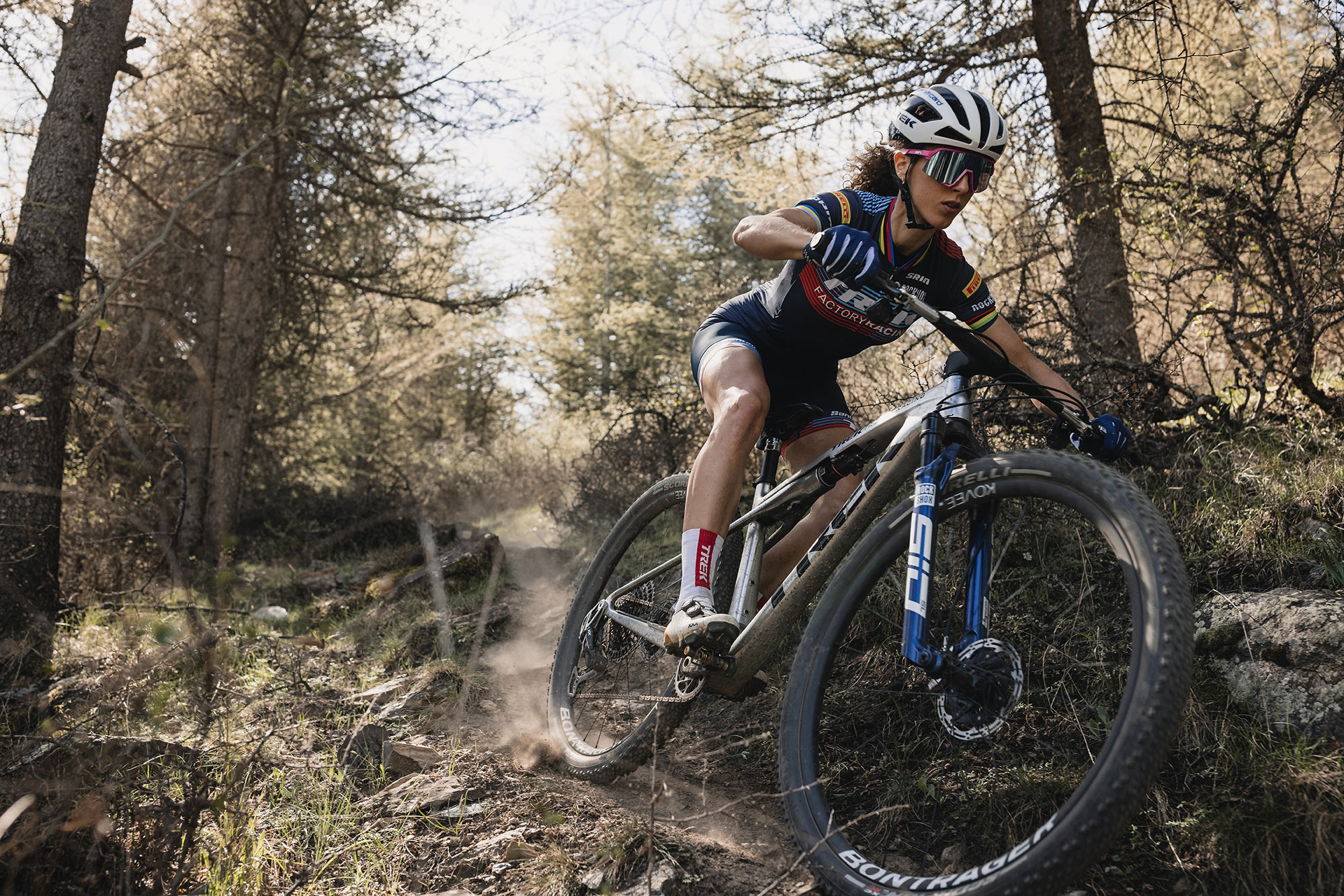
The original Trek Supercaliber was an extremely fast bike, using a unique IsoStrut shock to deliver an effective but short 60mm of rear travel paired with 100mm forks. Four years ago, that seemed like… enough. Now, courses continue to get more aggressive (have you seen the UCI MTB World Championships course? Seriously, look at it.), and the bike had to adapt.
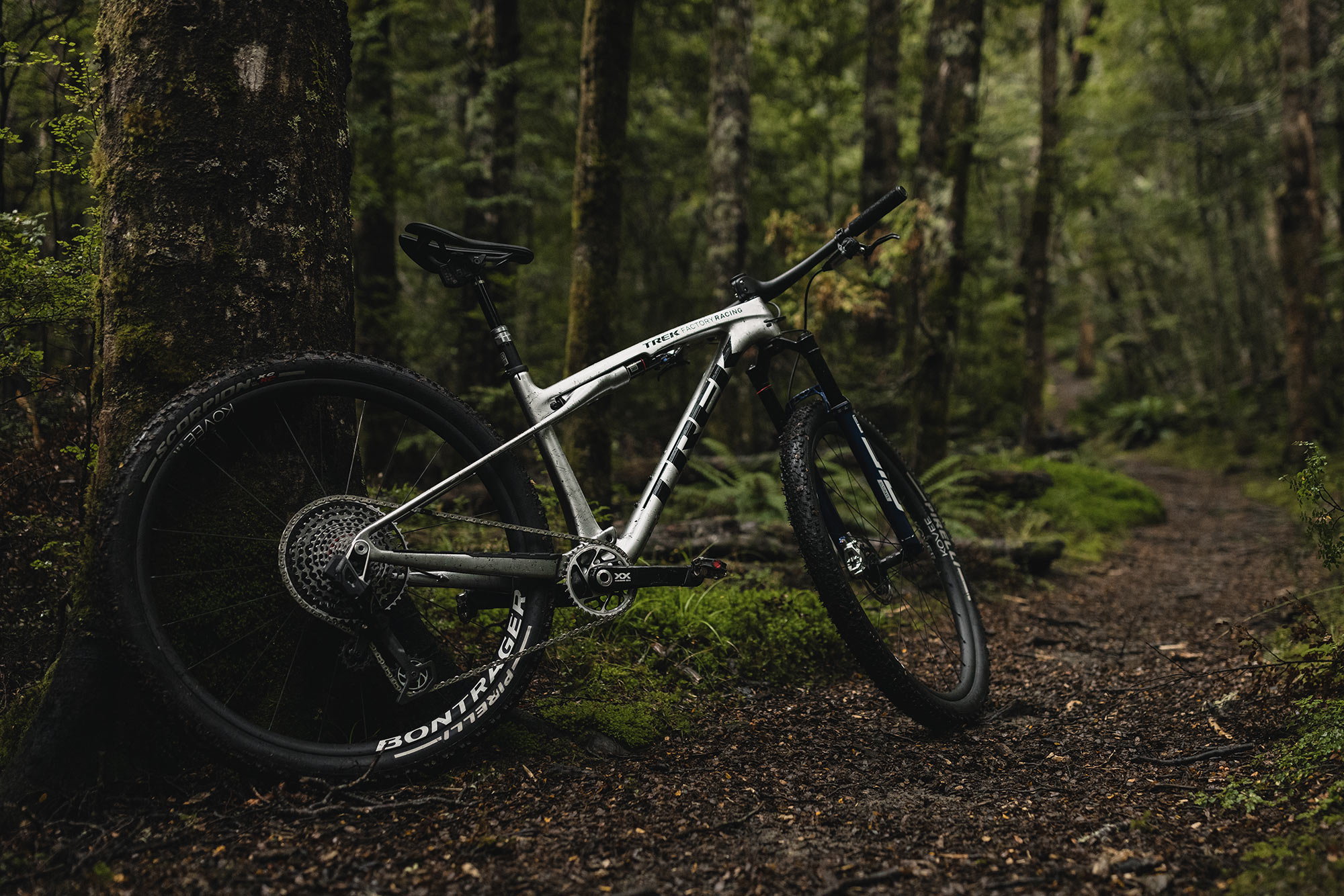
The 2nd generation Trek Supercaliber looks very similar, in some very good ways, but rear travel stretches to 80mm and forks to 110mm with either the new Rockshox SID SL or Fox 34 SC forks. Geometry is updated to match, and it now has two levels of carbon fiber across the models.
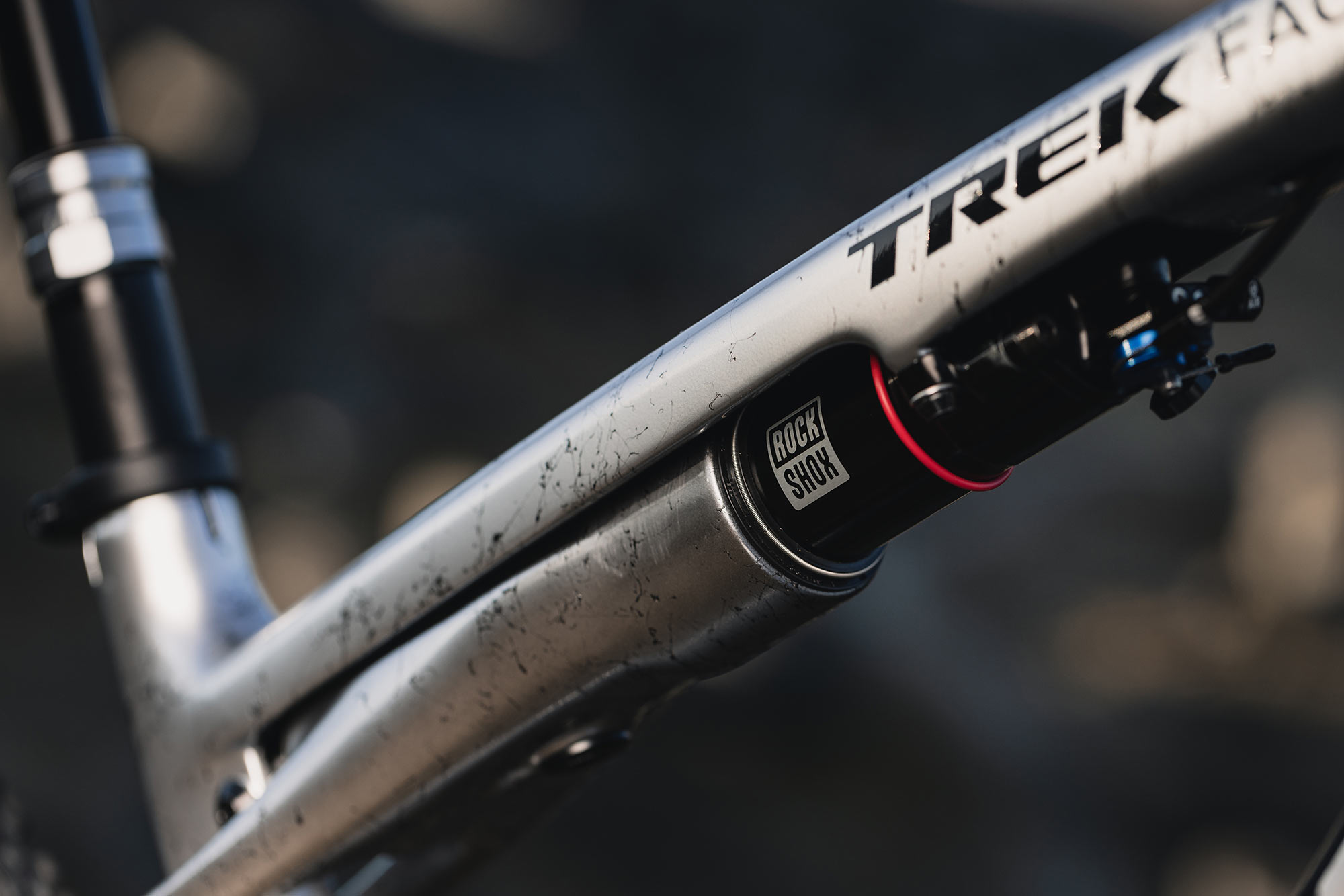
Starting with the frames, both share the same OCLV laminate schedule, but different materials and layups. The top-level SLR saves about 200-250g by eliminating internal cable tunnels in the front triangle, though it does use foam sleeves to keep any brake or shift lines from rattling around. It also uses more higher modulus fibers and gets away with fewer plies, so less material overall, putting it around 1,800-1,830g.
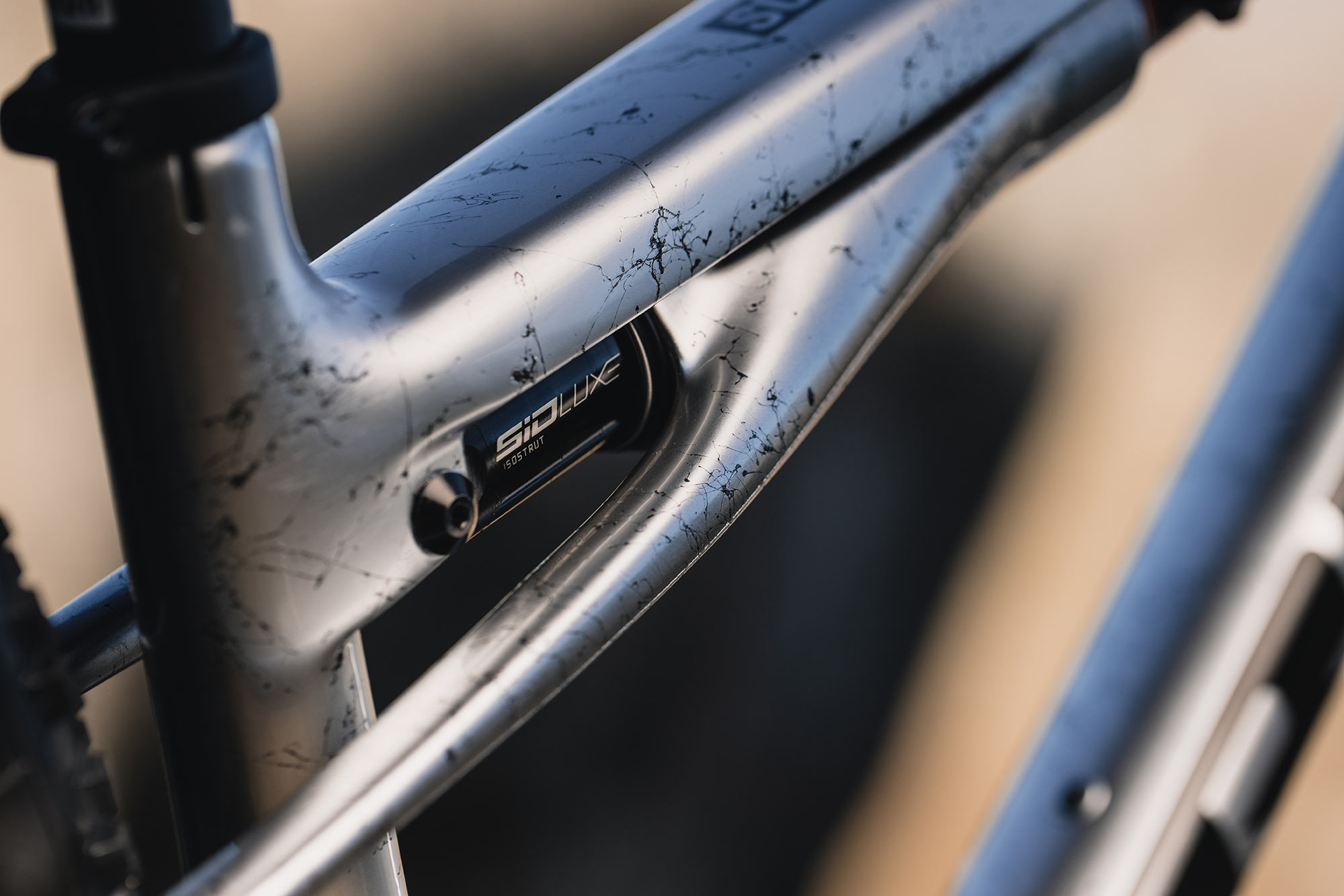
The SL gets those tunnels and channels to make routing and installation easier and uses more lower modulus fibers for a claimed weight around 2,030g, about the same as the prior model. Regardless of how you feel about losing or keeping internal sleeves, note that the bike sticks with standard internal routing ports at the head tube…no integrated stealth headset here, so there’s that.
Both models share the same rear triangle. Spec-wise, the SLR (9.8, 9.9) models get Bontrager’s one-piece carbon bar/stem and carbon wheels, which are some of the lightest on the market BTW. The SL (9.6, 9.7) models get alloy cockpits and wheels.

The shock is an all-new Rockshox SID Luxe IsoStrut model with 40mm stroke, up from the prior Fox IsoStrut model’s 32.5mm stroke. Eye-to-eye length only changed by 5mm. It also has a nearly flat 2:1 leverage ratio, versus the original’s that ramped from about 1.63:1 to 1.78:1, and higher anti-squat to keep it efficient under hard pedaling.

The head angle gets 1.5º slacker at 67.5º, and reach grows 10mm (ETT by 8mm). The BB sits 7mm higher to make room for the extra travel, and chainstay and wheelbase grow slightly for more stability. Seat angle gets 0.5º steeper.
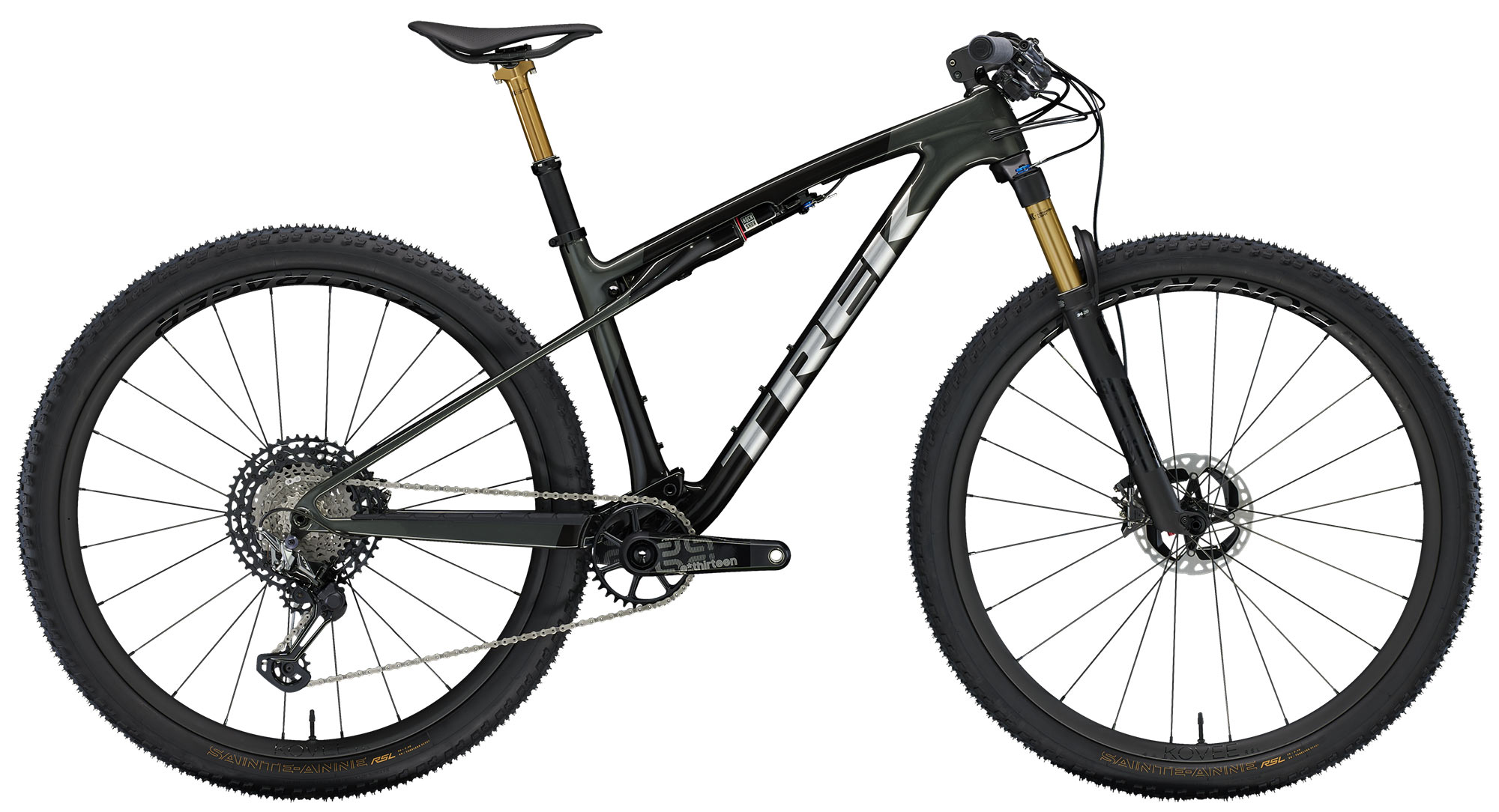
The flex seatstays remain, eliminating any pivot near the rear axle, making it a single-pivot design that slides the sleeve over the shock to activate it. A floating rear brake mount keeps braking forces on the chainstay so they don’t affect the flex or suspension.
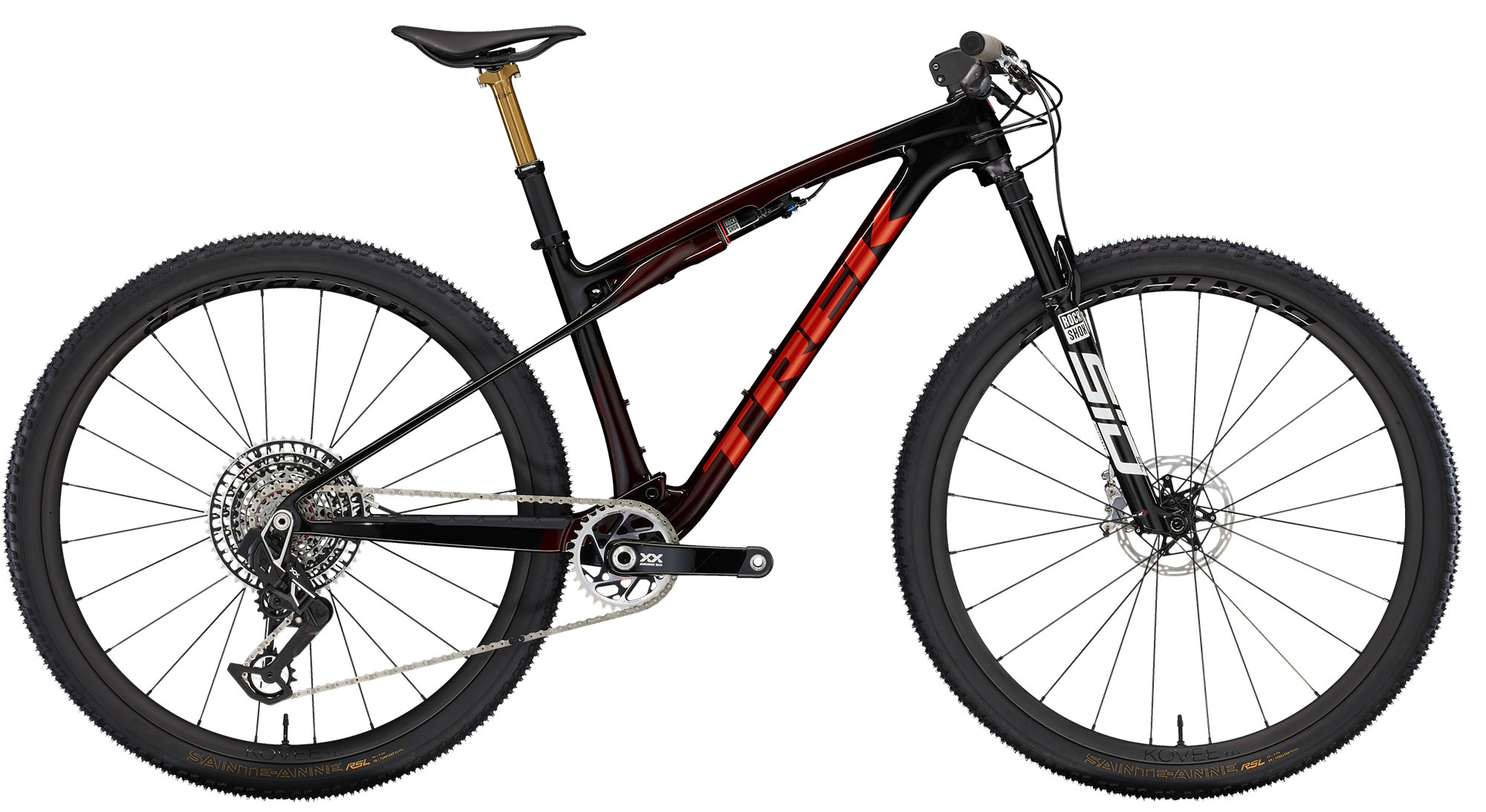
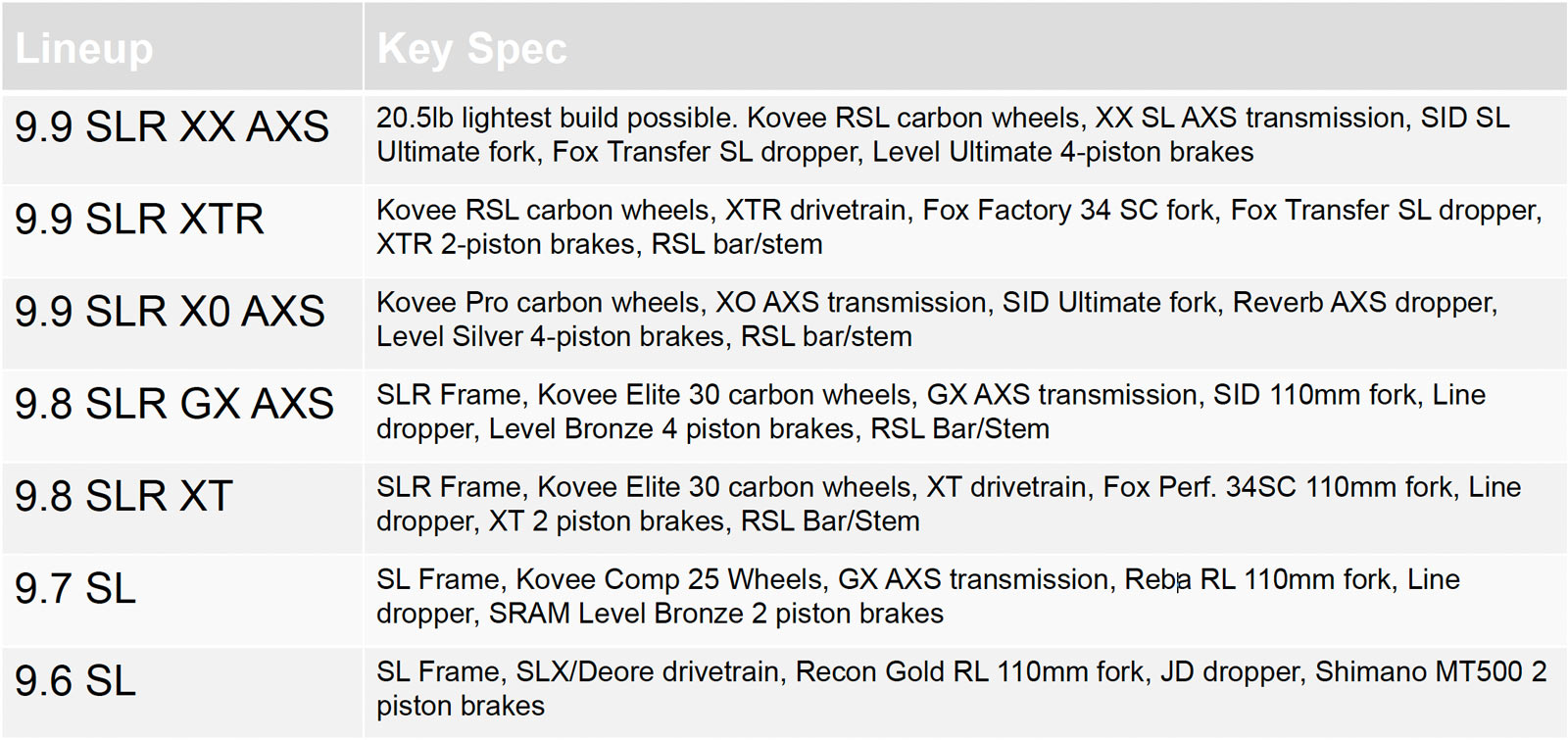
Note that claimed weight, just 20.5lb (20.8lb according to another spreadsheet they sent with the launch materials) for the top model. With hardware and IsoStrut shock, the claimed SLR frame weight is 1950g, add 200-250g for the SL version. Complete bikes range from 20.8lb (9.45kg) to 28.9lb (13.1kg), and prices from $4,199 to $11,699.
The post New Trek Supercaliber Tops Off Travel, Drops Off 250g appeared first on Bikerumor.
